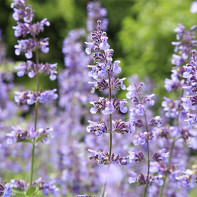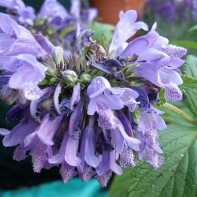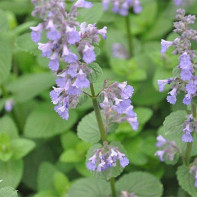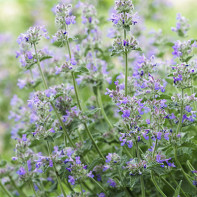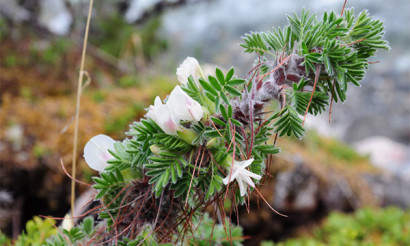Hemlock: therapeutic properties and contraindications
Cattleya is a perennial herbaceous plant belonging to the family of the Jasper family. Culture winter-hardy and water-loving. Under favorable natural conditions, it lives over two years. It contains about 2.5-3% esters, causing a distinct lemon smell.
- Chemical composition.
- How it looks and where it grows
- Types of
- Harvesting and storage
- How does catnip differ from melissa
- Catnip Medicinal Properties
- Catnip in folk medicine
- Types of medicinal compositions
- Infusion
- Infusion
- Decoction
- Tea
- Oil
- Cooking Applications
- Country jam
- Summer refreshment
- Spicy homemade sauce
- Veterinary use
- Contraindications to use
- How to grow catnip from seeds
The plant is also called catnip or herb, glushniak, marsh grass, fragrant shandra, field mint, forest nettle, shenda and shanta. Catnip first came into use by the ancient Egyptians. The inhabitants of the country of the pharaohs worshipped cats and treated the fluffy animals living everywhere in the temples to aromatic herbs. The Egyptians were convinced that cats were relatives of the deity Bast.
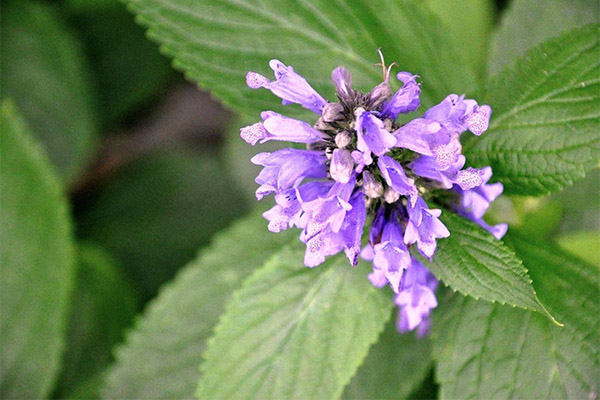
Celtic healers included chantha in the list of herbs that formed the basis of healing at the time. During the Middle Ages in most of Europe, shanda became famous for its anti-inflammatory and pain-relieving properties and was widely used by physicians and sorcerers. In magic, the marsh grass has been used as a charm or amulet.
Forest nettles are often called "catnip", because the plant has an excitatory effect for cats. After the animal smells the nettle, he will immediately begin to have attacks of activity - jumping, shaking his head, rolling on the floor and purring loudly. If the cat is hyperreactive, then the opposite effect will occur - it will calm down.
Scientific research has produced a description of the autosomal gene that controls the occurrence of the feline family's reaction to forest nettles. The work refers not only to domesticated, but also to wild representatives - tigers and lions. But about a third of the entire family is genetically insensitive to mint - this is considered an anomaly.
Such an effect on the body of felines is explained by the content of essential oils, which affect the receptors and hormonal background of pets. Sometimes cats have mild short-term hallucinations - due to a neural surge in the brain. Kittens are not affected by catnip until they are 10-12 months old. At this age, the animal reaches hormonal maturity. A moderate amount of catnip has a positive effect on the health of furry pets, so they often bite the leaves of the plant in gardens.
Chemical composition
Among the components that make up the above-ground part of the forest nettle can be found essential oils:
- geranial;
- inerol;
- neral;
- citral;
- geranolle
- citronellol;
- geranyl acetate.
Cats are attracted to the volatile non-petalactone constituents, about 70%, i.e., carvacrol, dipentene, and pulegon. Shenda seeds include about 30% fatty oils. In addition to the esters, the constituents include:
- ascorbic acid and ursolic acid;
- saponins;
- glucosidases;
- tannins;
- plant bitterness and mucilage;
- limonene.
With the right dosage and judicious use, catnip can provide invaluable benefits to the human body. Thanks to its acidic components, it normalizes water-salt metabolism, increases enzyme activity and improves the elasticity and tone of the cardiovascular system. Heat treatment has no effect on cat grass, that is, its useful properties when boiled or during drying, the plant does not lose its useful properties.
What it looks like and where it grows
The grass has a branched root and grows to a height of 40-100 cm. In appearance, the shrub is similar to mint and melissa, so inexperienced gardeners often confuse them.
The stems are erect, with many branches and leaves. The latter have an elongated triangular shape and large prongs, dropped together with heart-shaped bases. The flowers are bipartite, consisting of five parts, and form false whorl-like inflorescences with a white-purple or bluish-lilac hue. Cultivated plants have larger and more beautiful flowers, while wild plants have smaller and more unsightly ones. After the end of ontogenesis, the bolls begin to appear in the places where the flowers were located, and as they ripen, the process of self-seeding takes place.
The wind blows its seeds over long distances, so the plant grows extensively in areas stretching from western European areas to North America. Reeds of catnip have been found in the Caucasus, Siberia, the Far East and Central Asia.
Flowering begins in the first decade of June and ends in September. The crop is undemanding and adapts practically everywhere - both in the mountains and in wastelands, but not in Antarctica. It prefers light uniform soil and is not very fond of neighbors with weeds.
Field mint is not only wild, it is often grown by gardeners on homestead plots. Catnip not only decorates the area, but also serves as bait for bees. The exquisite smell and attractive appearance allow you to use the culture in landscape design.
Types
A fairly large number of varieties of shenda is revealed. Breeders almost annually grow several new varieties. The main species that are often found in dacha plots, can include the following:
- Lemon or cat grass is the most popular type of shanda.
- Fassena - a hybrid distinguished by its ornamental qualities.
- Large-flowered - from the name it is clear that it is characterized by large bright inflorescences.
- Semi-sitting - unpretentious, often used in landscape design, it is this variety that is more often confused with melissa.
- Musina (mussini) - a spice, added to marinades and liqueurs.
- Siberian - common in Mongolian and Central Asian lands.
- Multiflower - found on slopes or open meadows with large rich blue inflorescences.
- Vibrant (veined) - blooms profusely from early to late summer, and takes root in sunny areas.
- Brush-shaped - used in the decoration of flower beds.
- Kokand and Bukhara - grows in the highlands, its height does not exceed 40 cm.
Fragrant shandra is difficult to call exotic, it is unlikely to strike the eye of the average person. The beauty of the plant lurks in modesty: delicate fluffy leaves and small bright flowers. Proper planting among the unsightly crops will allow the catnip to look very advantageous.
A tall catnip bush will dominate in a rock garden, on an alpine hill or in a mixboard. If the forest nettle is higher than all other planted crops, it is better to place it in the center. Good companions for catnip are all varieties of anaphalis, fennel, phlox, santolina and meadow geranium. The medium-sized bole grass is suitable for both curbs and borders, in combination with flowers of blue and purple or contrasting yellow and red hues.
In addition to its decorative function, the shantha is used as a flavoring and additive to teas or in traditional medicine. For this reason, the crop sometimes neighbors with sage, melissa and mint bushes.
Harvesting and Storage
After 2-3 years of life, shandra fragrant bushes give a good harvest. It begins to be collected during flowering, when a significant number of inflorescences are located on the stems. This is the time period - from the first decade of June to the end of September - when the upper part of the shrub should be cut and dried.
There is no need to hurry and collect the stems in the first 12 months after planting, because the plant has not yet had time to accumulate vitamins and minerals. The catnip reaches its peak of usefulness in the third year of flowering, having accumulated the maximum amount of essential compounds. Harvesting is done by hand, cut only the tops, leaving the stems 15-20 cm high from the roots.
Then the raw material should be dried in a well-ventilated room, otherwise rotting processes will begin. Once the stems and inflorescences have reached a marshy gray hue, they should be bagged in cloth bags and moved to a warehouse. When properly harvested, the raw material is stored for 1.5-2 years, after the lapse of time, the useful properties are lost.
How does catnip differ from melissa
Both cultures are popular among gardeners and are used in the preparation of pharmaceuticals and in folk medicine recipes. This is due not only to their pleasant citrus and mint flavor, but also to the wide range of effects on the human body.
The most common type of melissa is medicinal, which belongs, like the forest nettle, to the family of the Yarrow. It is one of the main representatives of the genus. Its closest relative is peppermint, for which reason this crop is almost unheard of without the subtle and delicate lemony notes in its scent.
Melissa was first noticed and cultivated in the Mediterranean, and then it gradually began to spread throughout southern Europe, Central Asia, Western Siberia and the Caucasus.
A perennial crop, like catnip, but not taller than 70-80 cm. It has straight stems studded with small tetrahedral leaves in a light green shade. The corolla of Tregubus melissa is branched. The fruits of the plant are dry, falling apart into 3-4 brown or black nuts after the flowering period, but bitterness occurs when you bite into them. It smells brightly of lemon.
Cold spells are detrimental to the lemon balm. The plant dies out rather quickly, because it is sensitive to sudden drops in temperature. When planting, choose a well-lit place that protects it from the cold.
Melissa is propagated by bushes, by offshoots and vegetatively - by transplanting cuttings. Seeds will be needed to breed catnip, and with proper care, the crop will grow within a few weeks. It is better to plant shenda in early spring or late winter.
Women are recommended tea with melissa if ovarian dysfunction, hormonal disruption has been detected, as well as at menopause, painful menstruation or during intoxication. This herb has a calming effect on psychosis or neurosis, improves brain activity and metabolism, in particular helps to cleanse the gastrointestinal tract, and has a positive effect on the cardiovascular system. Melissa will help speed up cell renewal and healing of the skin. Forest nettle differs from its counterpart in its antiseptic effect.
Therapeutic properties of catnip
Wild mint has a multifaceted effect on the body. The medicines made of chantilly cure and prevent many diseases. Wood nettles are able to have the following effects:
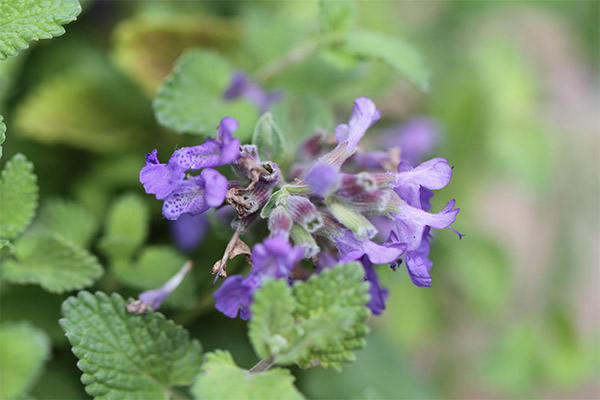
- Anti-inflammatory - both for internal organs and for damaged skin.
- Antispasmodic - gets rid of colic in the stomach and intestines, relaxes the smooth muscles.
- Calming - relieves stress conditions, including neurosis.
- Antipain - mutes discomfort after serious injuries or during a migraine attack.
- Hemostatic - it will affect both internal and external bleeding; it is recommended for menstrual bleeding.
- Diuretic - eliminates swelling, cleanses the kidneys and reduces inflammation in the urinary system.
- Expectorant - it dilutes phlegm and reduces its viscosity, increases the discharge of mucus and accelerates its excretion.
- Stimulating - with prolonged illness, the appetite is reduced, but the plant induces a natural sense of hunger and the person begins to replenish energy reserves.
Because of its medicinal properties, catnip is valued by modern doctors and folk healers. Infusions and decoctions of wild nettle are often recommended for several ailments, the list of which includes:
- migraine;
- severe headache;
- depression;
- apathy;
- melancholy;
- hysterical seizure;
- flatulence;
- constipation;
- diarrhea;
- insomnia;
- cramping;
- sore throat;
- lumps in the throat;
- ACUTE RESPIRATORY INFECTIONS;
- toothache;
- inflammatory process;
- worms;
- bronchitis;
- women's problems;
- Increased or decreased intestinal acidity;
- unstable blood pressure;
- gastritis;
- ulcers;
- dystrophy;
- anemia;
- scabies;
- eczema;
- boils;
- diabetes mellitus;
- hypertension.
Wild mint is ideal for decoctions and infusions. The remedy can also be given to children - for sound sleep, to prevent anxiety and relieve colic. Doctors prescribe chantilly to hyperactive children to normalize the nervous system. Women kotovnik will help restore the menstrual cycle.
Catnip in folk medicine
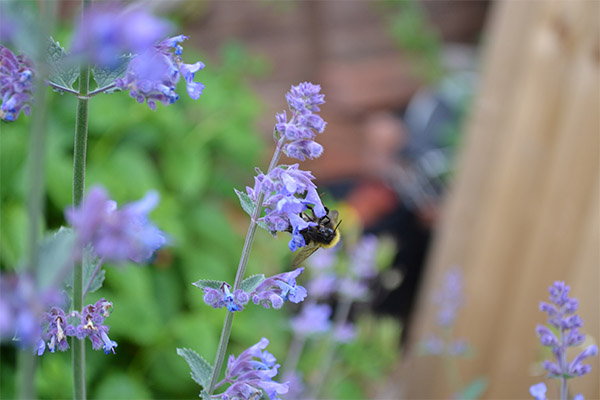
- In problems with the gastrointestinal tract, 20 g of dried shandy pour a glass of steep boiling water and insist 1.5-2 hours. Then strain the mixture through a fine strainer and take 3 times a day before meals to 15 ml. The composition is used in inflammation on the skin - acne or black dots. In the latter case, the decoction has an antiseptic effect and slightly whitens the skin.
- Frequent insomnia and anxiety during sleep will help relieve a combination of forest mint, valerian root, hop cones, chamomile inflorescences and passiflora. Mix all the ingredients in equal quantities. For 100 g of dried herbs you will need half a liter of boiling water. The mixture is steamed and put on medium heat. Boil for 5-7 minutes and stand for about an hour. Strain the decoction and drink 120 ml after each meal. The course of treatment is 15-20 days.
- Normalize the menstrual cycle will help laurel leaf and fragrant chandra. You will need 25 sheets of the first and 40 grams of the second one. Tear bay leaves into small pieces and mix them with chandelier, pour 300 ml of steep boiling water and insist for 30-40 minutes. Drink immediately after cooling. Continue to take it until the period, and start a week before the expected date.
- To regulate menstrual bleeding, take 25 g of dried knotweed, 35 g of horsetail, 60 g each of Gentian, forest nettle and goosefoot. Mix the ingredients and pour purified water, then put on medium heat and bring to a boil. Insist 40-50 minutes and strain. Drink the tincture in small sips within a day.
- Inhalation for inflammatory process in the bronchi is carried out on the basis of a mixture of 70 g of peppermint to 500 ml of water. Bring the composition to a boil over low heat. Conduct inhalation a couple of hours after eating. To do this, sit near a container with a decoction, but not too close - half a meter, covered with a thick cloth and breathe through your mouth - so vapor enters directly into the bronchi and affect them, removing trapped mucus. The procedure should not last more than 15 minutes. If there are difficulties during inhalation, we try to keep it at least 5-7 minutes. After the procedure we lie down and rest for about half an hour, it is forbidden to talk or eat.
- Neuroses and neurotic conditions will help relieve a simple remedy. For its preparation pour 30 grams of catnip in 300 ml of boiling water and cool. Then add a teaspoon of lemon juice and 25 grams of honey. Take 2-3 times a day, 120 ml after meals.
- Toothache and inflammation in the mouth will eliminate a compress of sagebrush. Grind the leaves of the plant to a powdered state and wrap them in a natural fabric - linen or cotton. The resulting envelope is soaked in warm water and put to the inflamed area of the gum for 15-20 minutes. After that, rinse your mouth with infusion of chamomile or calendula.
- Constipation, diarrhea and colic are no problem if you prepare a herbal solution for an enema. To do this, take 2 tbsp. fresh catnip and grind. Pour 500 ml of steep boiling water, cool it down and carry out a recreational procedure. Permissible to use the broth and for kids from 2 years.
- Inflammation relieves a mixture of ground marshmallow root, sage leaves, peppermint, licorice, pine buds and anise. All ingredients are taken in equal proportions. For 100 grams of dry herbs you will need 1 liter of pure water. Mix everything in a saucepan and bring to a boil. We insist 1.5 hours and take 70 ml every 3-4 hours for 7 days. Catnip is recommended for anorexia, because the disease provokes impaired appetite and disorder of the stomach and intestines, and the plant has the opposite effect to the symptoms.
- If helminths or worms are detected, a decoction will help, for which in equal parts you will need ground elecampane root, wormwood, tansy, St. John's wort, valerian root and field mint. If you take 1 tsp. each component, you will need 600 ml of boiling water. Boil dry collection and leave in a cool place for 2-2.5 hours. Strain and drink 60 ml before each meal, but not on an empty stomach, for 30 days.
Types of medicinal compositions
To prepare medicine according to time-tested folk recipes, it is not necessary to receive a medical education, it is enough only to know the proportion so as not to cause harm to your body.

Infusion
An alcohol-free remedy is the easiest to prepare. You need a glass of purified water and 50 g of dry ground catnip leaves. Mix the liquid with vegetable powder and bring to a boil over medium heat, then strain. Ready to infuse store in a cool place for 5-7 days.
Tincture .
Home remedy in alcohol is made by taking in equal parts dried crushed catnip leaves and lemon or mint. Pour peppermint 65-70% alcohol. Sustain for a day and pour into a vessel of dark glass, first adding 7-10 drops of ether.
Decoction .
To prepare it will need 150 grams of dry shaman and 2 liters of pure water - mix in a pot, bring to a boil and cook for another 7-10 minutes. Let it stand for 5-6 hours and use it for both external and internal use.
Tea
Universal drink is made from 1 tbsp. dried catnip for 250 ml of boiling water. Tea is brewed in a thermos or a thermocup and left for a couple of hours. The maximum number of drinks drunk per day should not exceed one glass, otherwise there may be side effects.
Tea made of peppermint and willowweed is also known for its useful properties. Mix 10 grams of each herb and pour 300 ml of hot water. Let it rest for half an hour and drink warm after adding honey and a slice of lemon to taste.
The oil
You can buy catnip oil from the drugstore store, but it is better to make your own hands - so the remedy will retain maximum benefit. You need to buy or cut fresh forest nettles, cut off the leaves and rinse under cold running water, then dry with paper towels and put in the fresh air for 10-15 minutes.
Collect the raw material in a bag or cloth bag and beat with a wooden mallet - so more volatile compounds will come out. Transfer to a glass jar, tamping slightly, and pour olive or coconut oil, shake well and leave for 24 hours in a dark, cool place.
After a while, squeeze the leaves and strain the liquid, repeat the procedure 1-2 times, but already using a new portion of raw materials. Ready to store the oil in a dark glass container in the refrigerator or cellar for no more than 12 months.
Cooking applications
Nettles are often sown near apiaries because they are excellent honeybees. The grass is mowed after it flowers for the first time. It soon blooms again, and the bees bring in a second crop of delicious honey.
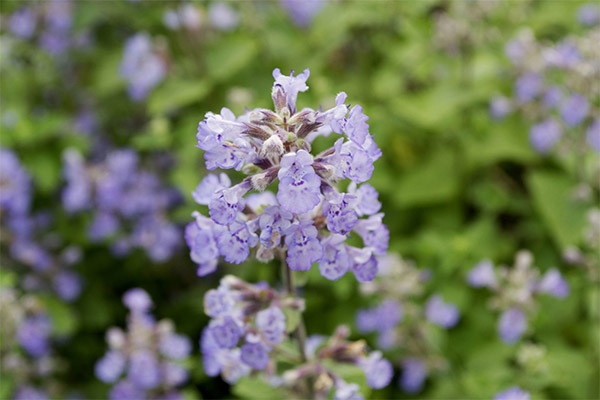
Catnip is actively used to make culinary masterpieces. Catnip is suitable for sauces, some varieties of cheese, for salting fish and meat, as a spice for marinades. It is also consumed fresh in summer salads.
Country jam
Need:
- Apples - 2,5-3 kg.
- Mint - 85 gr
- Purified water - 1,2 l.
- Refined sugar - 1,4 kg.
Cooking Technology
- Wash the catnip leaves under cold water and dry them. Pour water into a saucepan and bring to a boil. Then put the leaves into the boiling water and leave on medium heat for 5-7 minutes.
- Meanwhile, wash and cut into small pieces of apples. Prepared decoction strain, squeeze the leaves and remove.
- Pour the liquid over the apple slices and cook for about 20-30 minutes until it forms a slightly greenish puree.
- Rub through a sieve to achieve a homogeneous consistency and add sugar, water if necessary. Thoroughly mix and roll in jars.
Jelly can be eaten as jam or used as a sauce for pork or duck dishes. When cooking it is allowed to add spicy fresh ginger or horseradish, but this can also be done before serving directly to the table.
Summer refreshing drink
Ingredients:
- Sea buckthorn - 30 g.
- Melissa - 2 sprigs.
- Cottonberry - 3 inflorescences.
- Oregano - 2 sprigs.
- Currants - 6-7 leaves.
- Raspberries - 5-6 leaves.
Preparation:
- All ingredients are washed, a little dry and pour boiling water - 700 ml.
- If desired, add the berries of the same plants.
- Let it stand for half an hour and serve with honey and a slice of lemon, either hot or cold. Excellent thirst quencher.
Spicy homemade sauce
You need to take the following components:
- Tomatoes (plum variety) - 3 kg.
- Onion - 1 pc.
- Apple juice - 250 ml.
- Cloves - 4 cloves.
- Cauliflower - 3 tsp.
- Allspice - 4 peppers.
- Sea salt - 20 gr.
- Basil - 3-4 sprigs.
- Vinegar - 6 % - 40 ml.
- Garlic - 4 cloves.
- Olive oil - 40 ml.
Cooking technology:
- Remove the core from the tomatoes and squeeze with a juicer. The resulting mixture is rubbed through a sieve and discard the seeds. Tomato juice put on high heat and bring to a boil, boil for 1.5-2 hours, evaporating half of the liquid.
- Chop the onion and garlic, fry in a pan until golden, add the apple juice and beat with a blender until smooth. Pour the mixture over the tomatoes.
- We wrap the cloves, catnip, basil and allspice in a sterile bandage or gauze - tie it in a knot and immerse it in a saucepan. Boil about half an hour, add salt and sugar to taste.
- Pour into sterilized jars and close with lids. Wrap in terry cloth and leave to cool.
Store fragrant sauce in a dark place. Serve with meat dishes.
Veterinary use
The use of the plant is useful not only for people, but also for animals. Field mint is widely used in the veterinary field. The culture has a beneficial effect on the family of cats - pets become more peaceful and balanced. Catnip stalk is given to furry pets when moving, traveling long distances or stressful situations - going to the veterinary clinic.
A similar effect has been shown on the tiger, lion, leopard, cougar and cheetah. In ancient times, forest nettles were used as bait to catch lynx. Insects, however, are afraid of the plant, or more precisely, essential oils, so an extract of catnip is added to repellent against cockroaches, house moths and mosquitoes.
Contraindications for use
Field mint has not only beneficial properties, but also strict contraindications. The medicinal herb is strictly forbidden during pregnancy, as it can cause internal bleeding and miscarriage. You should not use catnip even during breastfeeding, because the plant significantly reduces the flow of milk.
The reason for not taking catnip is problems with the cardiovascular system - infusions and decoctions disperse the blood and cause moderate attacks of tachycardia.
The plant in high concentration can provoke drowsiness. Before a trip behind the wheel or other important activities from the use of catnip is better to refuse.
Although field peppermint has virtually no trace elements, provoking side effects and contraindications, the treatment of sagebrush better to be under the supervision of a doctor. A specialist most often prescribes appointments within the framework of a familiarization period, during which it will be found out how the herb affects the body: whether he is able to perceive the herbal raw material without an allergic reaction and other unpleasant manifestations.
How to grow catnip from seeds
Field mint - unpretentious perennial and complex care will not require. The culture is often found on infertile land - mounds or near roads. Certain varieties of sagebrush are recognized as weeds, so they grow in harsh conditions. But if desired, catnip can also be planted on a garden plot.
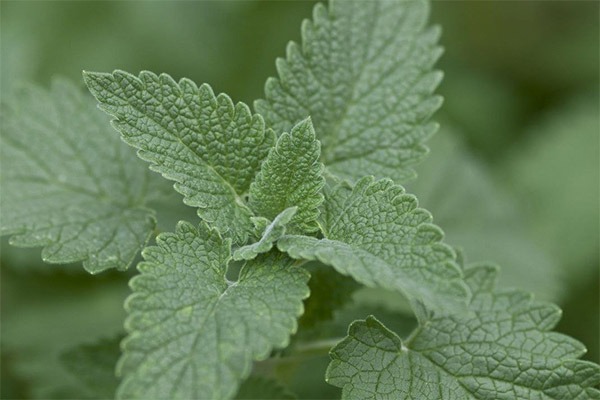
It will be necessary to choose a lighted, but fairly dry place, not occupied by weeds - more relevant for northern areas. In southern areas, the plot of soil should be naturally shaded. Bright sunlight is necessary for the plant to bloom lushly and form boxes with seeds. With poor light, the stems do not stretch out aesthetically because they are trying to catch the sun.
The soil chosen for planting should be loose, water- and air-permeable. Sand or humus should be added to lighten a too heavy substrate. After 5-6 years, the location of the shrub should be changed, otherwise it will greatly proliferate and lose its decorative properties. Also, shenda in the same area begins to independently spread to neighboring plots. To prevent this, the crop sometimes needs to be replanted and rejuvenated.
In watering and moisture, a golden mean is important: aridity or excessive moisture are equally destructive. With moderate precipitation, it is not necessary to water the chanta often. If humidity is low and it doesn't rain for a long time, water the catnip once every 10-12 days and then water it intensively. Chandra fragrant practically does not take root on soils with a high groundwater level - in this case, it is better to build elevated beds for the bushes.
It is recommended to apply fertilizers of organic and complex mineral type with a higher percentage of nitrogen impurities in the autumn and spring respectively. In autumn, cat grass can be fed with infusions of cow dung or chicken products (a ball of 7-8 cm in diameter per 15 liters of water).
Pruning is done during the flowering period - the procedure stimulates the appearance of new inflorescences, it means that a second "batch" of buds will appear during the season. The most lush stems should be selected for the harvesting. When cutting it is necessary to leave shoots of 15-20 cm, which after 3-4 weeks will bloom again. Timely pruning of perennials helps to prevent unwanted self-seeding. The cut greens should be dried and used as a medicine, spice or cosmetic.
The catnip is considered a frost-resistant plant, so there is no need for additional shelter in moderate climates. Hornbill growing in northern areas sometimes freezes during the harsh winter period, in connection with this the bushes need to be covered. For this purpose, dry leaves, lapnik, sawdust, or artificial covering materials - polyethylene or foam plastic - are used.
Bole grass is propagated by seeds, bush division or cuttings. In the first case, you need to buy ready-made or collect from spike-like inflorescences - cut when dry, when the lower part of the spikelets dries out. The resulting raw material should be spread in a ventilated room on white or solid-colored paper until ripened or fully dried. Then each of the inflorescences is peeled off to extract the seeds. The latter are now ready for planting.
Germination lasts for 22-24 months after harvesting. Planting can be done either in seedlings or directly in the ground. The chosen method affects the timing of planting. For seedlings - in the first half of April, and in the open into the ground - in the second half of May.
To germinate the seeds, they need to be mixed with chalk - to separate future plants. After that, prepare the soil: dig holes no more than 1-2 cm deep, which should be covered with sand and moistened with a sprayer. Next, put the seeds in the ground, gently cover with soil and spray again. If you plan to grow seedlings first, the process is repeated, but already in a mini-greenhouse.
When sowing in a permanent place, the minimum gap between the rows should be 30 cm. The optimum temperature for germination is considered 18-20°C, under such conditions with moderate humidity, the first shoots will appear in 2-3 weeks. If the sprouts are too dense, they will interfere with each other, so they need to be thinned out, leaving only the most resistant and strongest. In large numbers, weakened shoots will interfere with the development of their neighbors.
Procedures for further care are timely watering and weeding from wild weeds. Forest nettles, grown from seedlings, flower in the first 12 months of life, and when planting seeds in the open ground buds are formed after a couple of years.
The catnip is able to repel harmful insects - aphids and bedbugs. Plants planted next to perennials are also protected from parasitic attacks. The fight against possible pests - butterflies and moths, which lay eggs in the bushes of grouse, is conducted by chemical insecticides. Specific fungi and other diseases are practically not affected by the culture, so it does not give gardeners much trouble.
«Important: All information on the site is provided solely for introductory purposes. Before using any recommendations, you should consult with a health care professional. specialist before using any of the recommendations. Neither the editors nor the authors shall be liable for any possible harm caused by materials."

